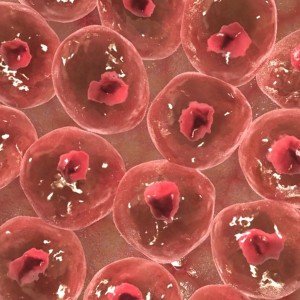Spanish Scientists Create ‘Mini Kidneys’ From Skin Cells
The Center for Regenerative Medicine takes first step to create a kidney ready for transplant without the risk of rejection. It is the first time that human renal tissues are created in the laboratory.
Kidney primordial was obtained in the laboratory of Juan Carlos Izpisua from human stem cells. They are marked in yellow human cells that have differentiated precursor cells in renal collecting system.
It was done in a few cells from the skin to a ‘mini Kidney’ by the grace of human regenerative medicine by the Spanish team of the Center for Regenerative Medicine in Barcelona (CMRB), directed by Juan Carlos Izpisúa. They have done so by using embryonic stem cells and iPS cells after reprogramming human skin cells from two patients suffering from kidney disease that causes the appearance of cysts in kidney.
The three dimensional structure generated in the laboratory is not like a miniature human kidney, not yet played the complexity of the whole human body. They are ‘mini’ renal collecting systems, with which it has been shown for the first time that renal tissue can be generated in the laboratory. It is, therefore, the first step in creating a human kidney from a patient’s own cells, ready for transplantation without fear or risk of rejection. The key driver in the field of kidney regeneration is published in the journal ‘Nature Cell Biology’.
Since the discovery of an effective formula without ethical objections to transform skin cells into any other cell type (neurons, heart cells, liver, retina) several research groups have managed to create new tissues and human structures. So yolks have been developed as liver or ‘mini brain’. However, so far had little success in converting stem cells in kidney cells; hence, the importance of the work of the Spanish group is so high.
Juan Carlos Izpisúa explains to ABC from his laboratory at the Salk Institute in La Jolla (USA), where he combines his research with CMRB; ‘The kidney was, to date, the only body that had not been successful in generating cells efficiently from human stem cells. Generating valued mini livers or other investigators was minibrains created three-dimensional structure that itself. Novelty in our research is two-fold, first obtain a simple protocol for renal lineage cells, and on the other, show that are able to form three-dimensional structures.’
This protocol allowed to turn stem cells into progenitor cells of the filtration system and renal collection in just four days. Once achieved, the cells were re-plated in a structure of mouse embryonic kidney. The result is another three-dimensional structure similar to a human embryonic kidney.
With this ‘mini kidney’ ‘is now a faithful model of polycystic kidney disease to study this serious ailment and test new drugs as if they rehearse in the patient. But the goal is to achieve functional organs for transplantation.
To generate a complete kidney is not easy because the body has a very complex structure. One of the options that Izpisua working group is doing is to use a mold that reproduces the kidney, as a skeleton, and then repopulate with cells. ‘The problem is that to cover the scaffolding or skeleton, it needs to be able to generate the appropriate cells and so far our work has been the only one able to get this far, but we still have a long way to go. Before you go running there is to know,’ he says.
The team from the Center for Regenerative Medicine in Barcelona now has two immediate goals. On one hand, generate nephrons (kidney cells) entirely human in the laboratory to mate with the manifold system that has already generated and on the other hand, induce directly kidney regeneration. That would mean that it would be necessary to create new tissue for transplantation, but it could repair the damaged kidney with a drug. ‘The fact that we found the signals needed to generate these cells in the laboratory has opened an amazing field to study endogenous renal regeneration with molecules capable of regenerating the kidney’, explains the researcher.
This group is already working on this track with urologists Hospital Clinic of Barcelona, the revolution in regenerative medicine.
It has just been 11 years since the Japanese Yamanaka discovered how an adult cell can turn back biological clock and turn into any human tissue. This theory successfully tested in the laboratory and has already given way to human experimentation. The scientific community looks forward to the first results of several clinical trials with this technology as it progresses faster than any other field.
The first condition being studied in patients is macular degeneration associated with age, the leading cause of blindness in the Western world.
Every day, announcing new efficient and safe techniques to generate iPS cells, the master key for generating human tissues. New developments, such as the one just given by the Spanish group, which opened a hope to think in a few years we will have a cutting-edge personalized medicine.
For more: http://www.reviewlization.com/
